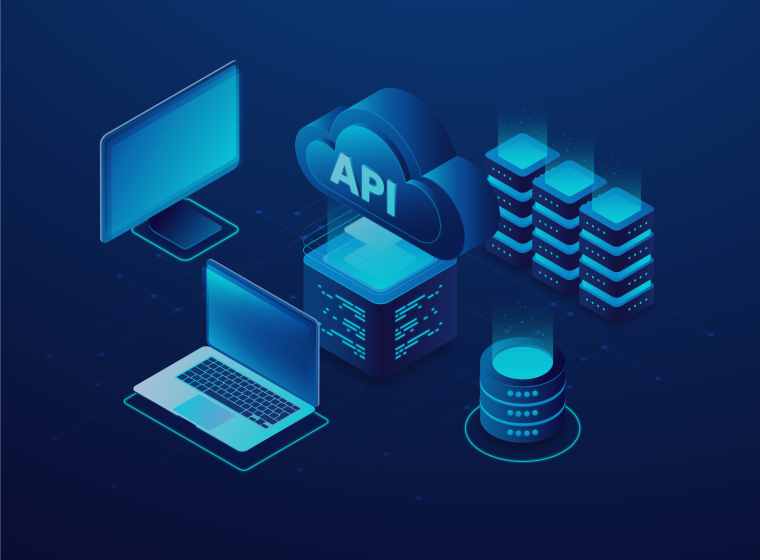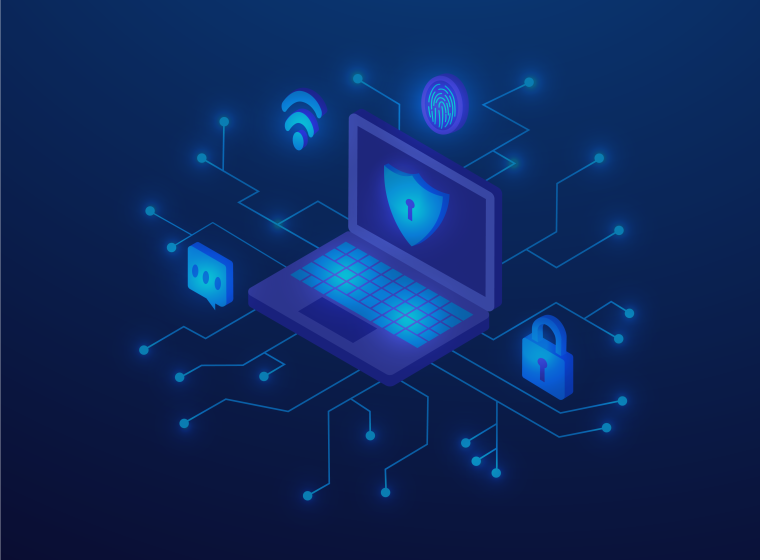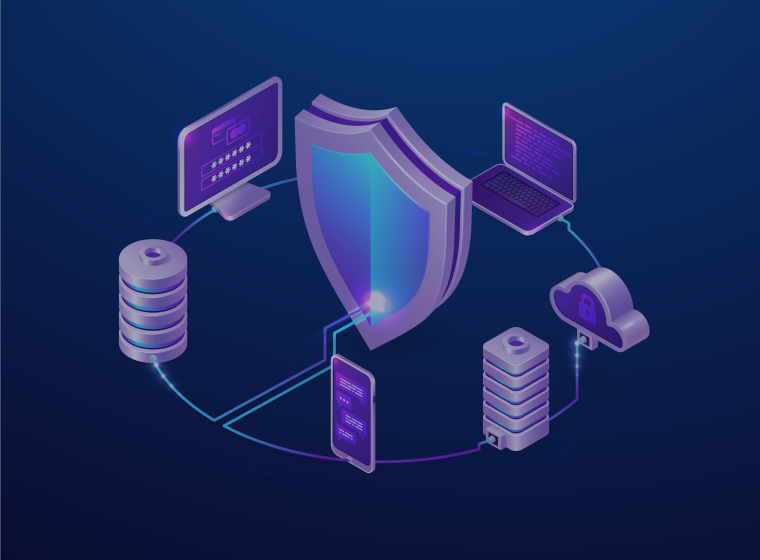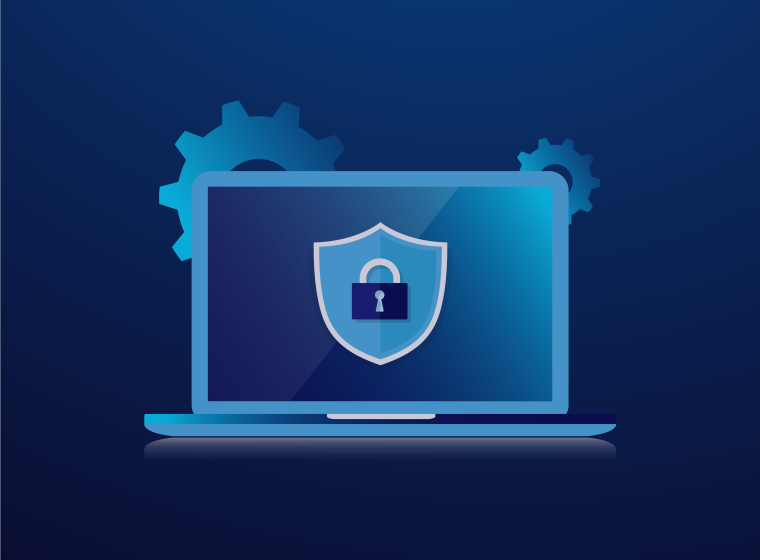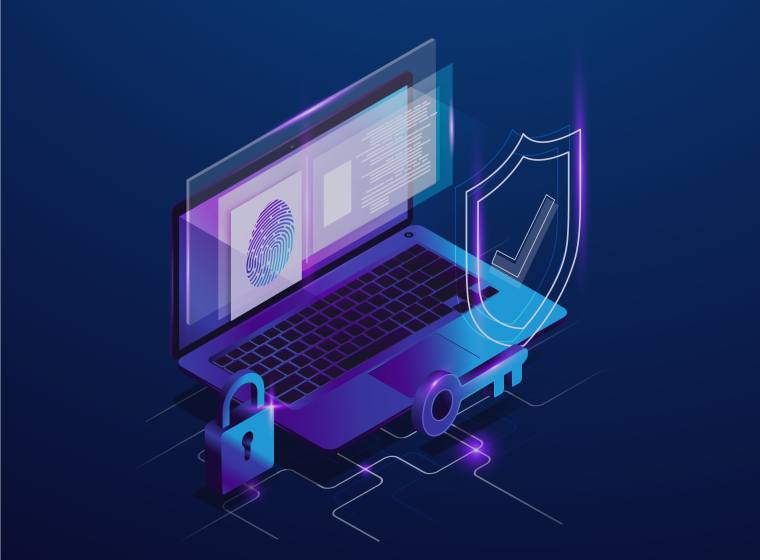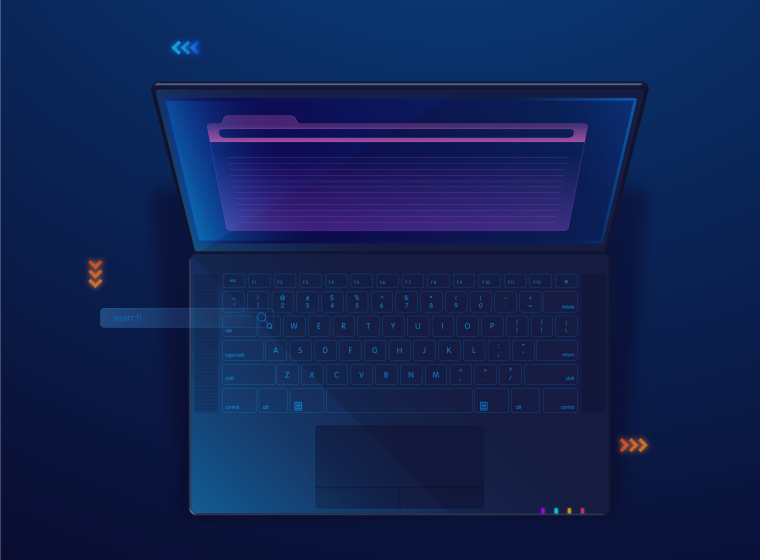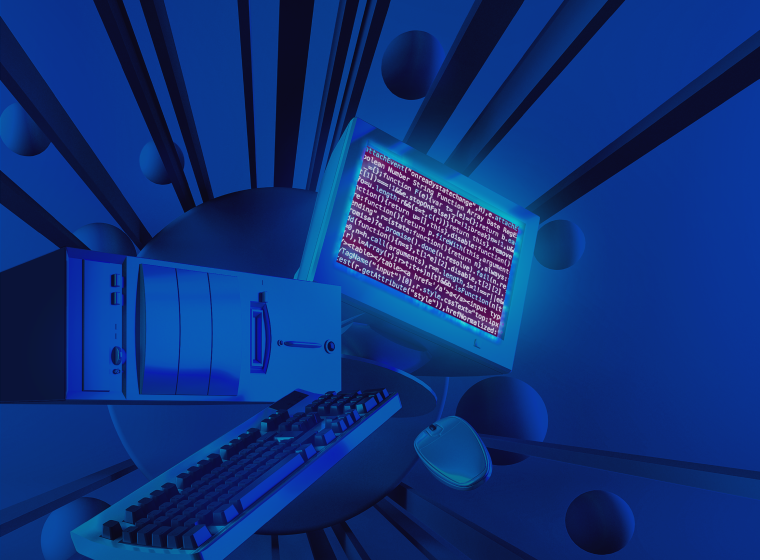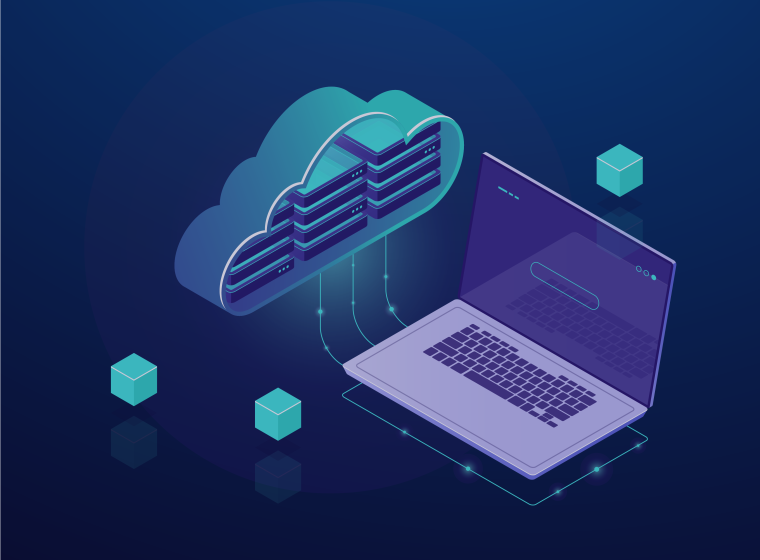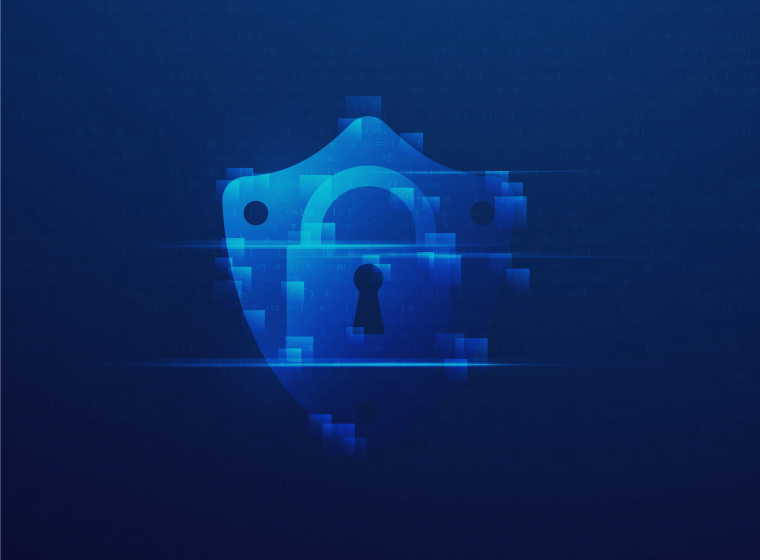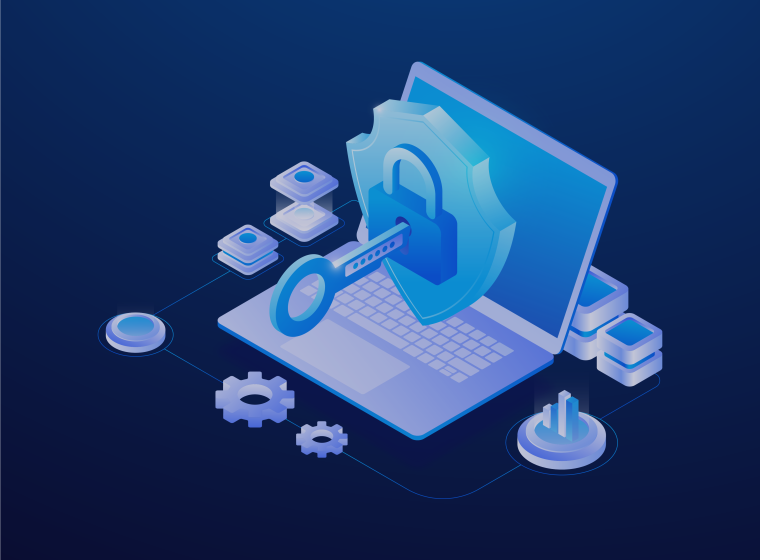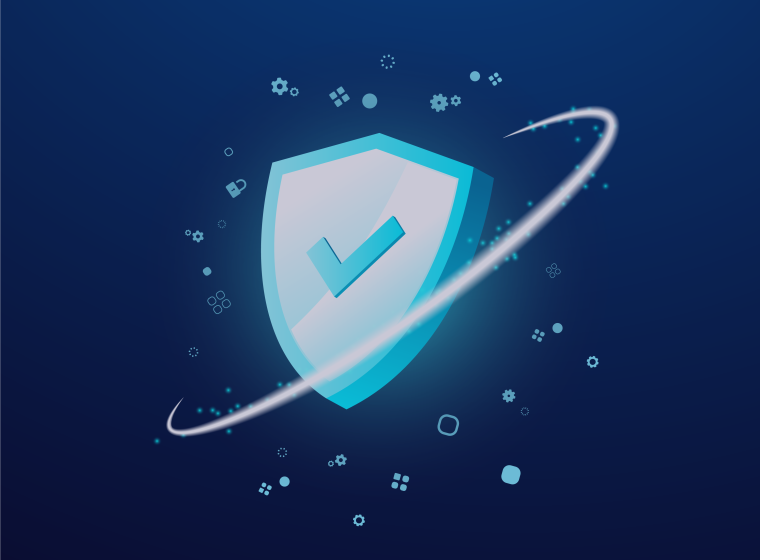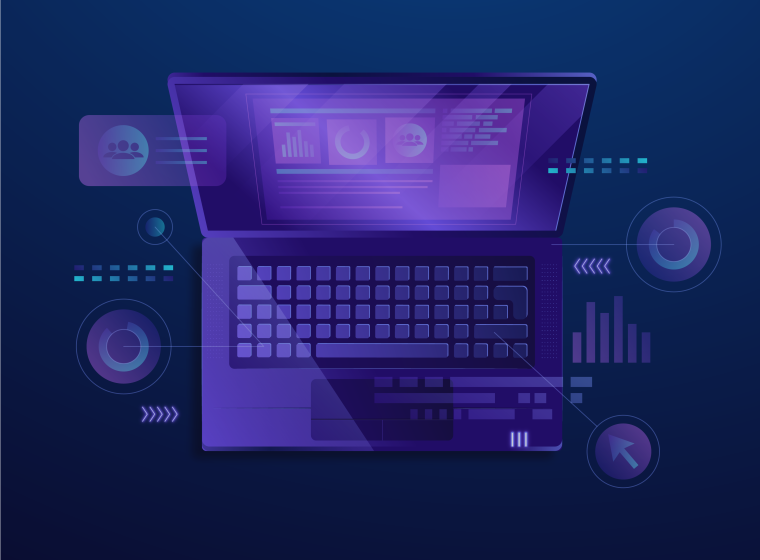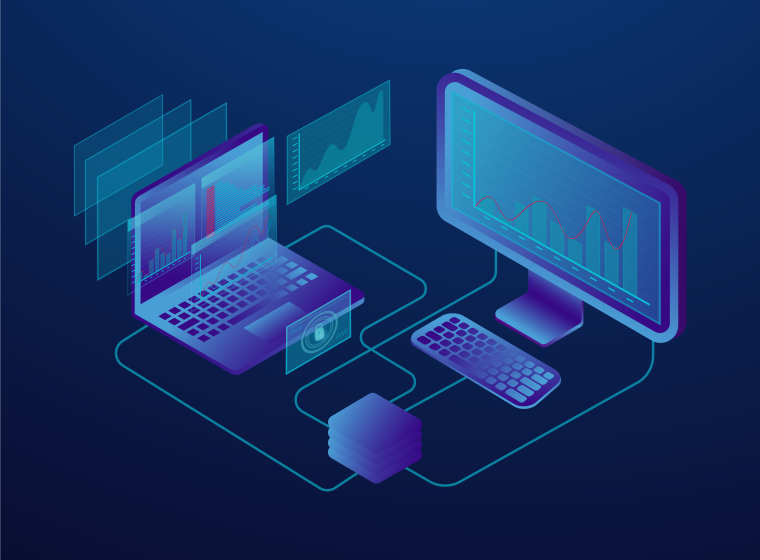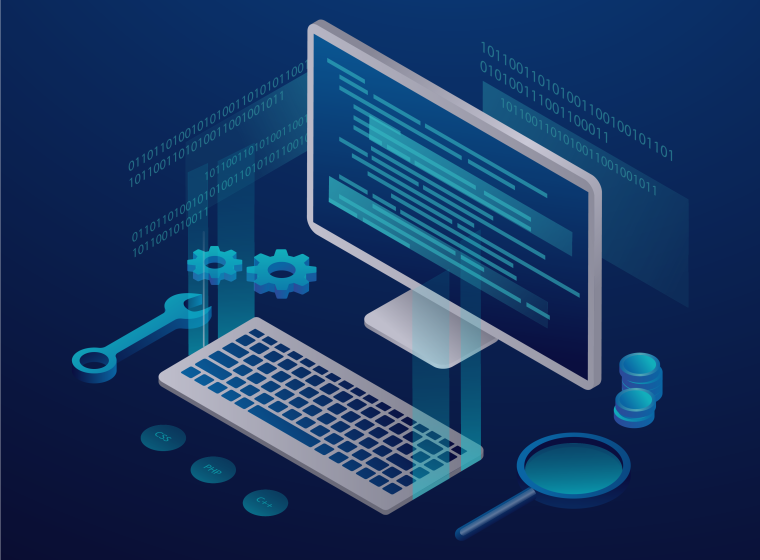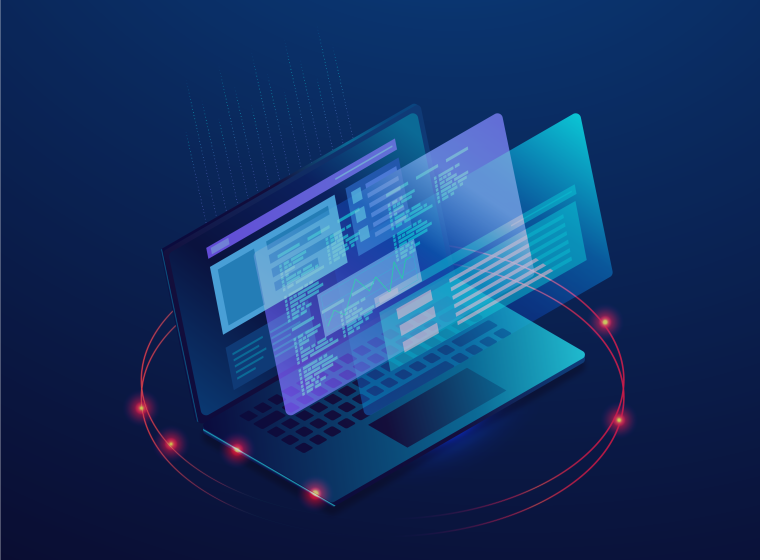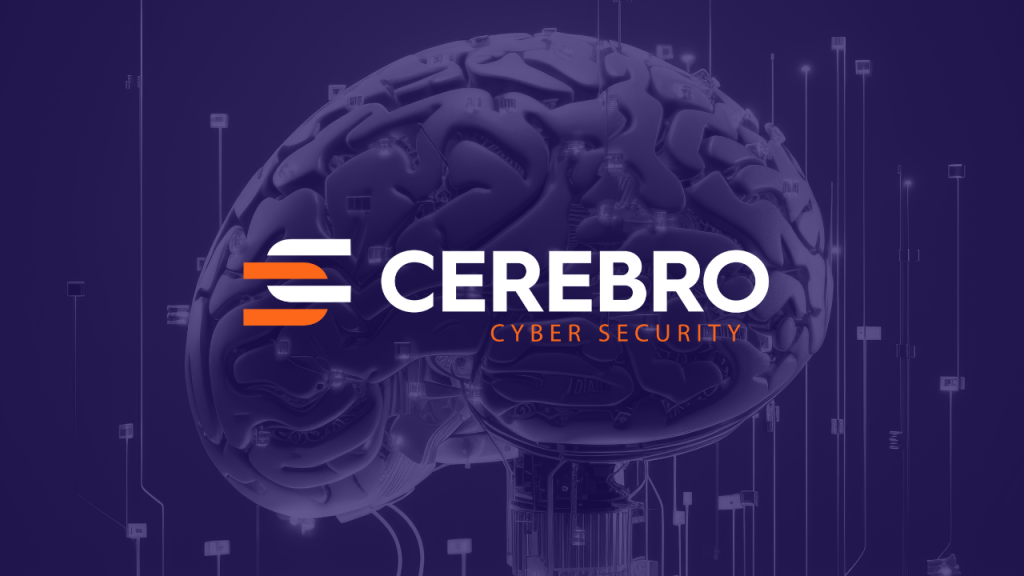Services
Cerebro Cyber SecurityServices
API Security Service

API Security Service
API security service involves implementing a comprehensive set of strategies and technologies to secure data exchange between different software applications and systems. This includes ensuring robust authentication and authorization to verify user identities and control access, encrypting data in transit and at rest to protect sensitive information, and applying rate limiting and throttling to prevent abuse and overload. Additionally, it involves validating all input data to prevent injection attacks and encoding output data to maintain integrity. Continuous monitoring and logging are crucial for detecting and responding to potential security threats, thereby maintaining the overall integrity and reliability of the API ecosystem
Authentication and Authorization
Authentication and Authorization
- Identity Verification: Implementing secure methods like OAuth, API keys, or JWTs to verify the identity of the user or application accessing the API.
- Access Control: Defining and enforcing permissions and roles to control which parts of the API different users or systems can access.
- Token Management: Managing the lifecycle of tokens (like JWTs), including their generation, expiration, and revocation, to ensure they are used securely.
If You Answer Yes To At Least One Of The Following Questions, You Need API Security Service
- Do you have APIs that are exposed to the public internet, making them accessible to external users or systems?
- Does your API handle sensitive or confidential data, such as personal user information, payment details, or proprietary business information?
- Are you concerned about the potential for abuse of your APIs, such as denial-of-service attacks or excessive usage that could overload your systems?
- Do you require compliance with industry-specific security standards and regulations, such as HIPAA for healthcare, PCI DSS for payment processing, or GDPR for user data protection?
- Is there a need for detailed monitoring and logging of API access and activities to detect and respond to potential security incidents?
Data Encryption
Data transmitted to and from an API should be encrypted to prevent interception and misuse. This typically involves using HTTPS for secure communication over the internet, and encrypting sensitive data at rest.
- Transport Layer Security (TLS/SSL): Using HTTPS to encrypt data in transit between the client and the API server to prevent eavesdropping and man-in-the-middle attacks.
- Encryption at Rest: Encrypting sensitive data stored in databases or servers to protect against data breaches and unauthorized access
- Key Management: Securely managing encryption keys, ensuring they are rotated regularly and not exposed to unauthorized entities.
Rate Limiting and Throttling
To protect against abuse and DDoS attacks, API security often includes limiting the number of requests a user can make in a given time frame. This helps maintain the service’s availability and performance for all users.
- Request Limits: Setting a maximum number of API requests that can be made in a specific time frame to prevent overuse and potential denial-of-service attacks.
- Adaptive Throttling: Dynamically adjusting rate limits based on usage patterns, peak traffic times, and other factors to optimize API performance.
- User-Specific Limits: Implementing different rate limits for different types of users or API clients, based on their usage patterns and requirements.
Input Validation and Output Encoding
APIs should validate all incoming data to ensure it’s within expected parameters and encode output data to prevent injection attacks, such as SQL injection or cross-site scripting (XSS).
- Validating Input Data: Checking all incoming data against a set of rules to ensure it’s the correct type, format, and within acceptable ranges to prevent injection attacks.
- Output Encoding: Encoding data when it’s outputted by the API to prevent injection attacks such as cross-site scripting (XSS) in web applications.
- API Schema Validation: Using tools and practices like OpenAPI Specification (OAS) to define and enforce the structure of API requests and responses.
Monitoring and Logging
Continuous monitoring and logging of API activity are essential for detecting and responding to potential security threats. This includes keeping track of who accessed the API, what actions were taken, and identifying any unusual patterns that could indicate a breach
- Activity Tracking: Continuously monitoring and logging API access and activities, including successful and failed authentication attempts, to detect potential security incidents.
- Anomaly Detection: Implementing systems to identify unusual or suspicious API usage patterns that could indicate a security threat.
- Audit Trails: Maintaining detailed logs for compliance and forensic purposes, ensuring that every action taken through the API can be traced back to a user or system
Download Brochure
Get
Professional
Help
Contact Us
Request For Information And Demo
Ddos Assesment Service

Ddos Assesment Service
A DDoS (Distributed Denial of Service) Assessment Service is a specialized cybersecurity offering designed to evaluate an organization’s resilience against DDoS attacks, which are attempts to disrupt normal web traffic and overwhelm a network or system, rendering it inaccessible to intended users. This service simulates controlled DDoS attacks under a safe environment to test the effectiveness of the organization’s defensive mechanisms. It identifies vulnerabilities in the network infrastructure that could be exploited during an actual attack. The assessment includes a thorough analysis of the current mitigation strategies, network capacity, and system response under high-load conditions. Following the simulation, the service provides detailed insights and recommendations for strengthening defenses, enhancing infrastructure robustness, and ensuring continuity of services during potential real-world DDoS attacks. By proactively identifying and addressing these vulnerabilities, DDoS Assessment Service helps organizations to fortify their networks against one of the most common and disruptive types of cyber threats
Simulation of DDoS Attacks
- Controlled Testing Environment: Creates a safe and controlled environment to simulate various types of DDoS attacks.
- Realistic Attack Scenarios: Mimics real-world DDoS attack patterns to test the network’s response under authentic conditions.
- Impact Analysis: Assesses the impact of these simulated attacks on network performance and availability.
If You Answer Yes To At Least One Of The Following Questions, You Need Ddos Assesment Response!
- Has your organization ever experienced a DDoS attack or faced significant disruptions due to unexpected network traffic spikes?
- Do you have concerns about the ability of your current network infrastructure to withstand and mitigate a high-volume DDoS attack?
- Are you unsure about the effectiveness of your current DDoS mitigation strategies and response plans?
- Is maintaining uninterrupted online services critical to your business operations and customer satisfaction?
- Do you want to proactively identify and address any vulnerabilities in your network that could be exploited in a DDoS attack?
Vulnerability Identification
Vulnerability Identification in cybersecurity is the process of systematically scanning and analyzing an organization’s network and systems to detect security weaknesses and potential points of exploitation. It involves assessing the current security infrastructure to uncover flaws such as outdated software, misconfigurations, or weak encryption, which could be leveraged by cyber attackers. This critical step forms the basis for developing strategies to strengthen defenses, thereby reducing the risk of successful cyber attacks
- Infrastructure Weaknesses: Identifies specific vulnerabilities in the network infrastructure that could be exploited during a DDoS attack.
- System Resilience Evaluation: Evaluates the resilience of the system under high traffic loads typical of DDoS attacks.
- Risk Assessment: Analyzes the potential risks associated with different types of DDoS attacks on the current infrastructure.
Mitigation Strategy Review
Mitigation Strategy Review in cybersecurity involves evaluating the effectiveness of existing strategies and measures in place to counteract and minimize the impact of potential cyber threats. This process includes assessing the adequacy of current response mechanisms, tools, and protocols to ensure they are capable of effectively detecting, preventing, and responding to security incidents. The review aims to identify areas for improvement, ensuring that mitigation strategies are up-to-date, comprehensive, and aligned with evolving threat landscapes and best practices
- Current Strategy Assessment: Reviews and assesses the effectiveness of existing DDoS mitigation strategies and tools.
- Response Mechanism Evaluation: Evaluates the organization’s response mechanisms in place for handling sudden traffic surges.
- Best Practice Alignment: Checks the alignment of the organization’s DDoS mitigation practices with industry best practices.
Recommendations for Improvement
Recommendations for Improvement in cybersecurity are targeted suggestions provided after assessing an organization’s security posture, aimed at enhancing its defenses against potential cyber threats. These recommendations typically include specific measures to patch identified vulnerabilities, update security protocols, or improve system configurations. Additionally, they often encompass strategic advice for adopting industry best practices, enhancing organizational security policies, and increasing staff awareness and training to bolster the overall security infrastructure.
- Enhanced Defense Strategies: Provides recommendations to strengthen the network’s defense against DDoS attacks.
- Capacity Building Suggestions: Offers suggestions to enhance the network’s capacity to handle large volumes of traffic.
- Customized Action Plan: Delivers a tailored action plan to address the unique vulnerabilities and needs of the organization.
Post-Assessment Support and Monitoring
Post-Assessment Support and Monitoring in cybersecurity refers to the continuous assistance and surveillance provided to an organization following a security assessment. This phase includes aiding in the implementation of recommended improvements, ensuring that the changes effectively strengthen the security posture. It involves ongoing monitoring of the network and systems to detect any new vulnerabilities or emerging threats, ensuring that the organization’s defenses remain robust over time. Additionally, this support typically includes regular updates and reviews of the security strategies to adapt to the evolving cyber threat landscape and maintain compliance with industry standards
- Implementation Guidance: Assists in implementing the recommended improvements to the DDoS defense strategies.
- Ongoing Monitoring Solutions: Offers solutions for continuous monitoring of network traffic to quickly detect future DDoS threats.
- Regular Update and Review: Suggests regular assessments and updates to the DDoS mitigation plan to keep up with evolving cyber threats.
Download Brochure
Get
Professional
Help
Contact Us
Request For Information And Demo
Firewall Assesment Service

Firewall Assesment Service
Firewall Assessment Service is an essential cybersecurity offering that focuses on evaluating and enhancing the effectiveness of an organization’s firewall, the first line of defense against cyber threats. This comprehensive service involves a thorough analysis of the firewall’s configuration, rules, and policies to ensure they are optimized for the highest level of security. Experts conduct detailed inspections to identify any misconfigurations, outdated rules, or loopholes that could potentially be exploited by cyber attackers. The service also includes testing the firewall’s ability to withstand various types of cyber attacks, including intrusion attempts, to evaluate its resilience. Alongside technical assessments, the service provides recommendations for improvements, aligning the firewall settings with best practices and the latest security standards. This proactive approach not only fortifies the firewall against current threats but also prepares it for emerging challenges in the cybersecurity landscape. Regular Firewall Assessments are vital for maintaining robust network security, compliance with regulatory requirements, and ensuring the overall protection of an organization’s digital assets
Configuration and Policy Review
- Analyzing Current Configurations: Evaluates the existing firewall settings to ensure they are configured optimally for security.
- Policy Compliance Check: Assesses whether the firewall policies align with industry standards and regulatory requirements.
- Rule Efficiency Analysis: Reviews and analyzes the set of rules defined in the firewall to ensure they are efficient, relevant, and secure.
If You Answer Yes To At Least One Of The Following Questions, You Need Firewall Assesment?
- Do you have a SOC team?
- Do you conduct Incident Response (IR) activities in-house?
- Are you looking for a tool for your SOC team or IR activities in the Cloud or your Data Center?
- Do you struggle to find the root cause of security breaches?
- Would you like to isolate and examine end-user devices remotely or from the relevant network in case of a security breach?
Vulnerability Identification
Vulnerability Identification is the process of detecting weaknesses in a system, such as misconfigurations or outdated software, which could potentially be exploited by cyber attackers.
- Detection of Misconfigurations: Identifies any incorrect settings or configurations that could leave the network vulnerable.
- Identification of Outdated Rules: Locates outdated or unnecessary rules that may compromise firewall effectiveness.
- Loophole Discovery: Uncovers potential security loopholes that could be exploited by cyber attackers
Attack Simulation and Penetration Testing
Attack Simulation and Penetration Testing are critical components of cybersecurity, where experts simulate cyber-attacks on a system, network, or application to identify and exploit vulnerabilities. This proactive approach mimics the tactics of real-world attackers, aiming to breach security defenses just as a malicious hacker would. The process involves systematically challenging security measures, including firewalls, encryption, and intrusion detection systems, to uncover weaknesses before actual attackers do. The findings from these tests provide valuable insights into potential security gaps and help in strengthening the system’s defenses. Penetration testing is essential for understanding an organization’s actual security posture and for ensuring the effectiveness of its protective measures in the face of evolving cyber threats
- Intrusion Attempt Simulations: Conducts controlled attack simulations to test the firewall’s ability to block unauthorized access
- Stress Testing Under Various Scenarios: Tests the firewall’s performance and resilience under different types of cyber-attack scenarios.
- Reporting on Test Outcomes: Provides detailed feedback on the firewall’s response to simulated threats
Recommendations for Improvement
Recommendations for Improvement in cybersecurity are actionable suggestions provided after assessing a system’s security posture, aimed at enhancing its defense against potential cyber threats. These recommendations typically include specific measures to address identified vulnerabilities, such as patching software, updating security protocols, or reconfiguring network settings. They also often involve strategic advice on adopting best practices, improving security policies, and training staff to heighten overall organizational security awareness and preparedness.
- Tailored Enhancement Suggestions: Offers specific recommendations to strengthen firewall security based on the assessment findings.
- Best Practice Alignment: Advises on aligning the firewall settings with industry best practices and the latest cybersecurity trends
- Guidance on Advanced Features Utilization: Recommends utilizing advanced firewall features and technologies for improved security.
Ongoing Monitoring and Support
Ongoing Monitoring and Support in cybersecurity refers to the continuous surveillance and analysis of an organization’s IT infrastructure to detect and respond to potential security threats in real-time. This service includes regular updates and maintenance of security systems to ensure they remain effective against new and evolving cyber threats. Additionally, it provides continuous technical support and guidance, helping organizations to adapt their security strategies and maintain robust defense mechanisms over time
- Regular Assessment Scheduling: Proposes a schedule for regular firewall assessments to maintain continuous security.
- Support for Implementation: Provides support for implementing recommended changes and enhancements.
- Continuous Security Updates: Ensures the firewall is updated regularly to protect against new and evolving cyber threats.
Download Brochure
Get
Professional
Help
Contact Us
Request For Information And Demo
Regular Vulnerability Scanning Service

Regular Vulnerability Scanning Service
Regular Vulnerability Scanning is a critical cybersecurity service designed to proactively identify and address vulnerabilities within an organization’s IT infrastructure. This service involves the systematic scanning of networks, applications, and systems to detect potential security weaknesses that hackers could exploit. By regularly conducting these scans, organizations can stay ahead of emerging threats by identifying and patching vulnerabilities before they are exploited. The process typically includes automated scanning tools that comprehensively assess the organization’s digital assets, followed by detailed reports highlighting detected vulnerabilities along with their severity levels. These reports often provide actionable insights and recommendations for remediation. Regular Vulnerability Scanning is not just a one-time activity but a continuous security practice, integral to maintaining a robust cybersecurity posture. It’s essential for compliance with various industry standards and regulations, ensuring that the organization’s technology environment remains secure against the ever-evolving landscape of cyber threats
Systematic Scanning of Digital Assets
Regular Vulnerability Scanning involves the thorough and systematic examination of all digital assets, including networks, applications, and systems. This comprehensive approach ensures that no component of the IT infrastructure is overlooked for potential security weaknesses
- Comprehensive Coverage: Ensures all parts of the IT environment, including network devices, servers, endpoints, and applications, are scanned.
- Automated Tools and Techniques: Utilizes advanced automated scanning tools to efficiently assess the security posture of digital assets.
- Regular Updates: Regularly updates scanning tools and methodologies to identify new and evolving vulnerabilities.
If you answer yes to at least one of the following questions, you need Carbon Black Response!
- Do you have a SOC team?
- Do you conduct Incident Response (IR) activities in-house?
- Are you looking for a tool for your SOC team or IR activities in the Cloud or your Data Center?
- Do you struggle to find the root cause of security breaches?
- Would you like to isolate and examine end-user devices remotely or from the relevant network in case of a security breach?
Detection of Security Vulnerabilities
The primary function of these scans is to identify security vulnerabilities that could be exploited by hackers. This includes weaknesses in software, flawed configurations, or outdated systems that are susceptible to cyber attacks.
- Identification of Weaknesses: Pinpoints areas in the system with potential security flaws, such as outdated software, unpatched systems, or misconfigurations.
- Severity Assessment: Evaluates the severity of each detected vulnerability to understand the potential risk and impact.
- Ongoing Monitoring: Continuously monitors for new vulnerabilities as they emerge in the rapidly evolving cyber threat landscape.
Frequent and Consistent Execution
Unlike one-time scans, this service is conducted regularly and consistently. The frequency can be tailored to the organization’s needs but is typically done weekly, monthly, or quarterly to ensure ongoing security
- Scheduled Scanning: Adheres to a regular schedule, ensuring consistent and ongoing vulnerability assessment.
- Adaptability to Business Needs: Tailors the frequency of scans to the specific needs and risk profile of the organization.
- Consistent Security Posture: Maintains a consistent level of security vigilance, crucial for early detection of potential threats.
Detailed Reporting and Analysis
Post-scan, the service provides detailed reports outlining the discovered vulnerabilities. These reports include the severity level of each vulnerability, the potential impact on the organization, and often suggest prioritization for remediation efforts.
- Clear and Comprehensive Reports: Provides detailed reports that clearly categorize and describe each vulnerability.
- Contextual Information: Offers contextual understanding of vulnerabilities, helping prioritize remediation efforts based on potential impact.
- Historical Comparison: Allows for comparison with past scans to track vulnerability resolution progress and recurring issues.
Recommendations for Remediation
Beyond just identifying vulnerabilities, this service often includes recommendations for fixing the identified issues. This could involve patching software, updating systems, changing configurations, or implementing additional security measures to mitigate the risk of a cyber attack
- Actionable Remediation Guidance: Offers specific recommendations for addressing identified vulnerabilities to enhance security.
- Best Practice Suggestions: Includes best practice advice to prevent similar vulnerabilities in the future
- Resource Allocation Guidance: Assists in prioritizing vulnerabilities for remediation based on risk, helping allocate resources effectively.
Download Brochure
Get
Professional
Help
Contact Us
Request For Information And Demo
XDR/EDR Rule And Correlation Service

XDR/EDR Rule And Correlation Service
XDR/EDR (Extended Detection and Response/Endpoint Detection and Response) Rule and Correlation services are integral components in advanced cybersecurity strategies. They focus on seamlessly integrating multiple layers of security defenses, providing comprehensive monitoring and analysis across endpoints, networks, and cloud services. The ‘rules’ in these services are sophisticated algorithms designed to detect a wide range of cyber threats, from malware to sophisticated, multi-vector attacks. The ‘correlation’ aspect involves intelligently linking disparate security events and data points across the network, identifying patterns that may indicate a coordinated attack or breach. This approach enables a more holistic understanding of the security landscape, allowing for rapid detection of anomalies that could signify a security threat. By automating response actions and providing in-depth threat analysis, XDR/EDR services significantly enhance an organization’s ability to quickly and effectively respond to and mitigate potential cybersecurity incidents
Comprehensive Threat Detection
XDR/EDR services provide extensive monitoring capabilities across an organization’s entire digital landscape. This includes endpoints like computers and mobile devices, as well as networks and cloud environments, ensuring a broad detection range for potential cyber threats.
- Endpoint Monitoring: Continuously monitors all endpoints like laptops, servers, and mobile devices for signs of malicious activity.
- Network and Cloud Surveillance: Extends beyond endpoints to include network traffic and cloud environments, ensuring a complete overview of potential vulnerabilities.
- Real-time Detection: Offers immediate identification of security threats, enabling swift action to mitigate risks.
If You Answer Yes To At Least One Of The Following Questions, You Need XDR/EDR Rule And Correlation Service?
- Do you experience frequent security alerts, and find it challenging to distinguish between false positives and genuine threats?
- Is your organization struggling to integrate and correlate data from various security tools and platforms?
- Have you encountered advanced cyber threats or sophisticated malware that went undetected by your current security setup?
- Do you lack real-time visibility and analysis of your network’s endpoints, potentially leaving you vulnerable to cyber attacks?
- Are you seeking to enhance your cybersecurity response capabilities to automatically and effectively counteract identified threats?
Advanced Analytical Rules
These services utilize sophisticated analytical rules to sift through vast amounts of data. They detect anomalies and patterns indicative of cyber threats, leveraging advanced algorithms and machine learning techniques to identify potential security breaches more accurately.
- Behavioral Analysis: Utilizes behavioral analysis to recognize patterns of activity that deviate from the norm, indicating potential security incidents.
- Machine Learning Integration: Employs machine learning algorithms to enhance the detection of complex, evolving threats.
- Custom Rule Configuration: Allows customization of detection rules to suit specific organizational needs and threat landscapes.
Data Correlation and Contextualization
One of the core strengths of XDR/EDR services is their ability to correlate disparate data from various sources. This process involves linking seemingly unrelated events across different platforms to form a coherent picture of the security situation, helping to pinpoint real threats amidst the noise.
- Event Correlation: Links events across different systems and time frames, identifying patterns that single-point solutions might miss.
- Contextual Analysis: Provides context to security alerts, helping to distinguish between false positives and genuine threats.
- Historical Data Analysis: Analyzes historical data to understand long-term trends and to predict future security challenges.
Automated Response Mechanisms
Upon detection of a threat, XDR/EDR services can initiate automated response protocols. These responses range from isolating affected endpoints, blocking malicious IP addresses, to executing scripts that counteract the detected threat, thereby reducing response times and mitigating potential damage
- Adaptive to Emerging Threats: Continually updates detection and response capabilities to adapt to new and emerging cyber threats.
- Regular Updates and Maintenance: Ensures that the system stays up-to-date with the latest threat intelligence and security protocols.
- Feedback Loop for Continuous Improvement: Incorporates feedback from incident responses to improve and refine detection rules and response strategies.
Continuous Evolution and Adaptation
XDR/EDR services are designed to continuously evolve, adapting to new types of cyber threats. This adaptability is crucial in the rapidly changing cyber landscape, ensuring that the organization’s security posture remains robust against both current and emerging threats
- Isolate infected systems to prevent lateral movement and remove malicious files.
- Provide secure access to any endpoint with “Live Response.”
- Automatically collect and store detailed forensic data for post-incident investigations.’
Download Brochure
Get
Professional
Help
Contact Us
Request For Information And Demo
Dark Web Assesment Service

Dark Web Assesment Service
A Dark Web Assessment service is a specialized cybersecurity offering that focuses on monitoring and analyzing the dark web for any indications of compromised data or threats related to an organization. The dark web, a part of the internet not indexed by standard search engines and accessible only through specific software, is often a hub for illicit activities, including the sale of stolen data and credentials. Through a Dark Web Assessment, cybersecurity experts scan these hidden regions to detect if sensitive information from a company, such as confidential business data, employee information, or customer details, has been leaked or is being traded. This service is crucial for proactive security measures, as it alerts organizations to potential breaches and enables them to respond before significant harm occurs. In addition to monitoring, the assessment often includes recommendations for strengthening security postures and mitigating risks associated with any discovered vulnerabilities. By understanding and keeping a vigilant eye on activities in the dark web, organizations can better protect themselves against emerging cyber threats and data breaches
Monitoring the Dark Web
- Accessing Hidden Networks: Utilizes specialized tools and techniques to access parts of the internet like the dark web, which are not reachable via standard browsers.
- Continuous Surveillance: Maintains ongoing monitoring for signs of an organization’s data, ensuring up-to-date information and detection.
- Broad Scope of Search: Covers various types of dark web sites, including forums, marketplaces, and private networks, to ensure comprehensive surveillance
If you answer yes to at least one of the following questions, you need Carbon Black Response!
- Have you encountered unexplained security incidents that suggest a potential data compromise?
- Are you uncertain about the exposure of your sensitive business or customer data on the dark web?
- Do you lack comprehensive monitoring systems that can detect if your organization’s data is available on the dark web?
- Is maintaining the integrity of your data crucial for your business operations and reputation?
- Do you want to proactively identify and mitigate cyber threats that originate from or are facilitated by the dark web?
Identifying Data Breaches and Leaks
The primary goal is to identify if any company data, such as confidential business information, employee records, or customer details, has been compromised, leaked, or is being illegally traded on the dark web
- Detection of Sensitive Data: Identifies any leaked sensitive information such as financial records, personal employee data, or customer information.
- Source Identification: Attempts to trace the origin of the data breach, whether it’s through external hacking, insider threats, or accidental leaks.
- Assessing Data Type and Volume: Evaluates the type and amount of data exposed to gauge the potential impact of the breach
Risk Assessment and Analysis
The service includes a thorough analysis of the found data to assess the level of risk and potential impact on the organization. This step is crucial for understanding the severity of any data breach or exposure
- Evaluating Threat Level: Analyzes how the exposed data could be misused by cybercriminals and the level of threat it poses to the organization
- Impact Analysis: Assesses the potential consequences of the data breach on the organization’s operations, reputation, and regulatory compliance
- Trend Analysis: Looks at emerging trends in data breaches and dark web activities to predict and prepare for future threats
Alerting and Reporting
Organizations receive timely alerts and detailed reports if their data is found on the dark web. This prompt notification allows for swift action to mitigate any potential damage.
- Immediate Alert Systems: Implements systems that promptly notify the organization when their data is detected on the dark web
- Detailed Reporting: Provides comprehensive reports detailing the nature, extent, and implications of the data exposure
- Incident Insights: Offers insights into the breach, including possible causes and characteristics of the compromised data
Recommendations for Security Enhancement
Beyond just identification, the service often provides recommendations for improving cybersecurity measures. This guidance is tailored to prevent future breaches and to strengthen the overall security posture of the organization against dark web-related threats.
- Tailored Security Measures: Proposes specific cybersecurity measures and best practices tailored to the organization’s unique context and the nature of the breach
- Preventive Strategies: Advises on strategies to prevent future incidents, including employee training, policy changes, and technical safeguards
- Resilience Building: Focuses on strengthening the overall resilience of the organization against future dark web threats and cyber attacks
Download Brochure
Get
Professional
Help
Contact Us
Request For Information And Demo
Virtual War Room
Virtual War Room
Virtual War Room, when tailored for cybersecurity services, are a crucial tool for enhancing an organization’s preparedness against digital threats. In these exercises, participants, typically including IT professionals, security experts, and key decision-makers, are presented with realistic cyber threat scenarios, such as data breaches, ransomware attacks, or system infiltrations. The team collaborates to assess the situation, identify vulnerabilities, and develop response strategies. This interactive process not only tests the effectiveness of existing cyber incident response plans but also helps in identifying weaknesses in the organization’s digital defenses. These exercises foster a culture of proactive security, enhance communication across departments, and ensure that all team members are familiar with their roles in the event of a cyber incident. Ultimately, cybersecurity-focused tabletop exercises are invaluable in preparing organizations to respond swiftly and effectively to real-world cyber threats, thereby minimizing potential damage and downtime
Monitoring the Dark Web
The service involves scanning and monitoring the dark web, a hidden part of the internet not indexed by conventional search engines and known for illicit activities. This monitoring aims to detect any presence of an organization’s sensitive data.
- Accessing Hidden Networks: Utilizes specialized tools and techniques to access parts of the internet like the dark web, which are not reachable via standard browsers.
- Continuous Surveillance: Maintains ongoing monitoring for signs of an organization’s data, ensuring up-to-date information and detection.
- Broad Scope of Search: Covers various types of dark web sites, including forums, marketplaces, and private networks, to ensure comprehensive surveillance
If You Answer Yes To At Least One Of The Following Questions, You Need Dark Web Assesment Service?
- Has your organization experienced a data breach or suspect that confidential information has been compromised recently
- Are you concerned about the security of sensitive data such as customer information, intellectual property, or employee records
- Do you lack visibility into whether your organization’s data is being sold or shared on the dark web
- Is your organization in a highly regulated industry where data leaks can lead to significant legal and compliance issues
- Do you want to enhance your cybersecurity strategy by understanding and mitigating risks associated with the dark web
Identifying Data Breaches and Leaks
The primary goal is to identify if any company data, such as confidential business information, employee records, or customer details, has been compromised, leaked, or is being illegally traded on the dark web
- Detection of Sensitive Data: Identifies any leaked sensitive information such as financial records, personal employee data, or customer information
- Source Identification: Attempts to trace the origin of the data breach, whether it’s through external hacking, insider threats, or accidental leaks
- Assessing Data Type and Volume: Evaluates the type and amount of data exposed to gauge the potential impact of the breach
Risk Assessment and Analysis
The service includes a thorough analysis of the found data to assess the level of risk and potential impact on the organization. This step is crucial for understanding the severity of any data breach or exposure.
- Evaluating Threat Level: Analyzes how the exposed data could be misused by cybercriminals and the level of threat it poses to the organization
- Impact Analysis: Assesses the potential consequences of the data breach on the organization’s operations, reputation, and regulatory compliance
- Trend Analysis: Looks at emerging trends in data breaches and dark web activities to predict and prepare for future threats
Alerting and Reporting
Organizations receive timely alerts and detailed reports if their data is found on the dark web. This prompt notification allows for swift action to mitigate any potential damage
- Immediate Alert Systems: Implements systems that promptly notify the organization when their data is detected on the dark web
- Detailed Reporting: Provides comprehensive reports detailing the nature, extent, and implications of the data exposure
- Incident Insights: Offers insights into the breach, including possible causes and characteristics of the compromised data
Recommendations for Security Enhancement
Beyond just identification, the service often provides recommendations for improving cybersecurity measures. This guidance is tailored to prevent future breaches and to strengthen the overall security posture of the organization against dark web-related threats
- Tailored Security Measures: Proposes specific cybersecurity measures and best practices tailored to the organization’s unique context and the nature of the breach
- Preventive Strategies: Advises on strategies to prevent future incidents, including employee training, policy changes, and technical safeguards
- Resilience Building: Focuses on strengthening the overall resilience of the organization against future dark web threats and cyber attacks
Request For Information And Demo
Threat Hunting Service

Threat Hunting Service
Threat Hunting services are an essential component of modern cybersecurity strategies, designed to proactively search for and identify hidden threats that evade traditional security measures. Unlike reactive security systems, Threat Hunting involves actively seeking out sophisticated and often subtle cyber threats within an organization’s network. This proactive approach employs a combination of advanced technology, such as AI and machine learning, and the expertise of skilled cybersecurity professionals. These experts analyze patterns, detect anomalies, and investigate irregularities to uncover potential threats. By leveraging deep insights into both the network and the latest threat intelligence, Threat Hunting services enable organizations to stay ahead of attackers. This proactive defense mechanism not only identifies existing compromises but also provides strategic recommendations to enhance overall security posture, thereby reducing the risk of future attacks and strengthening resilience against cyber threats.
Proactive Investigation
- Continuous Monitoring: Maintaining ongoing surveillance of network and system activities to identify potential threats as early as possible.
- Hypothesis-Driven Approach: Formulating and testing hypotheses based on known threat patterns, anomalies, or intelligence, guiding the hunt.
- Environmental Awareness: Understanding the specific context of the organization’s IT environment to better identify what looks out of place or abnormal.
There is software available that allows you to define the behaviors a threat actor could exhibit on your end-user networks and servers and turn these definitions into alarms:
If you answer yes to at least one of the following questions, you need Threat Hunting Service
- Have you noticed unusual network activity or inconsistencies in system logs that remain unexplained by your current security measures?
- Do you lack the in-house expertise to proactively search for and mitigate sophisticated cyber threats that evade traditional security solutions?
- Do you need a more proactive approach to cybersecurity that goes beyond waiting for alerts from your existing security tools?
- Are you concerned about the potential for advanced persistent threats (APTs) or other sophisticated cyber attacks that could go undetected in your network?
- Are you facing challenges in keeping up with the evolving tactics, techniques, and procedures (TTPs) used by modern cybercriminals, potentially leaving your organization vulnerable to attacks?
Advanced Analytical Techniques
Threat Hunting utilizes sophisticated analytical methods, incorporating machine learning, AI, and behavioral analytics to detect anomalies and unusual patterns that suggest malicious activities.
- Behavioral Analytics: Using tools and methodologies to analyze patterns of behavior within the network and identify deviations that indicate potential threats.
- Machine Learning and AI: Employing advanced algorithms to process large volumes of data, recognizing patterns and anomalies indicative of cyber threats.
- Data Correlation and Analysis: Integrating and examining data from various sources (like logs, endpoints, and networks) to detect hidden threats
Expertise and Experience
Skilled cybersecurity professionals, often with extensive knowledge in cyber threats and forensic analysis, lead Threat Hunting. Their expertise is crucial for interpreting data, understanding the threat landscape, and making informed decisions during the hunt
- Cybersecurity Knowledge: Deep understanding of cybersecurity principles, attack vectors, and the latest cyber threats.
- Forensic Analysis Skills: Ability to conduct detailed forensic investigations to uncover the root cause and method of any intrusion
- Tactical and Strategic Insight: Balancing technical skills with strategic thinking to not only find threats but also provide advice on enhancing security posture
Customized Threat Intelligence
Effective Threat Hunting relies on tailored threat intelligence that is specific to the organization’s environment and industry. This intelligence includes understanding the latest attack methodologies, tactics, techniques, and procedures (TTPs) used by adversaries.
- Industry-Specific Intelligence: Gathering and utilizing intelligence that is particularly relevant to the organization’s industry and threat landscape
- Adaptation to Emerging Threats: Continuously updating the threat model to adapt to new and evolving cyber threats.
- Integration of External and Internal Intelligence: Combining external threat feeds with internal data for a comprehensive view of potential threats.
Strategic Recommendations and Response
The final component involves not just identifying threats but also providing strategic advice on how to address and remediate them. This includes enhancing existing security measures, closing vulnerabilities, and advising on best practices to prevent future compromises
- ncident Response Planning: Developing strategies for immediate response to identified threats to minimize impact.
- Remediation Strategies: Providing specific recommendations for addressing and neutralizing active threats.
- Preventive Measures and Best Practices: Advising on long-term security strategies and best practices to prevent future attacks and strengthen security resilience.
Download Brochure
Get
Professional
Help
Contact Us
Request For Information And Demo
Cloud Detection And Response

Cloud Detection And Response Service
Cloud Detection and Response Service represents a pivotal advancement in securing cloud environments, offering real-time monitoring and proactive threat detection within cloud infrastructures. This service is designed to seamlessly integrate with various cloud platforms, ensuring comprehensive visibility across multi-cloud environments. By employing advanced analytics and machine learning algorithms, it effectively identifies and responds to potential security incidents, thereby significantly reducing response times. The service not only detects anomalies and suspicious activities but also provides actionable insights for immediate remediation. Its automated response capabilities allow for swift containment of threats, minimizing potential damage and ensuring continuous cloud security. Furthermore, the service facilitates compliance with industry standards and regulations, making it an essential tool for organizations embracing cloud technology while prioritizing security and compliance
Workload Security Monitoring Service
Container Security is a specialized branch of cybersecurity, vital for organizations utilizing containerized applications. It ensures the security of containerized environments, such as Docker and Kubernetes, from development to deployment. This involves securing the container orchestration tools, the containers themselves, and their applications. Container Security implements robust strategies to manage vulnerabilities, enforce compliance, and protect against runtime threats. It includes scanning container images for known vulnerabilities, monitoring containerized applications for suspicious activities, and implementing strict access controls. This proactive approach is crucial in a DevOps environment, where continuous integration and continuous deployment (CI/CD) practices can inadvertently introduce security risks. By prioritizing Container Security, organizations can maintain the agility and scalability benefits of containerization, while significantly mitigating the risk of security breaches and ensuring the integrity of their applications in a fast-paced deployment environment
There is software available that allows you to define the behaviors a threat actor could exhibit on your end-user networks and servers and turn these definitions into alarms:
If you answer yes to at least one of the following questions, you need CLoud Detection And Response Service?
- Do you store sensitive data in the cloud and are concerned about unauthorized access or data breaches?
- Have you experienced challenges in detecting and responding to security incidents within your cloud environments?
- Are you looking for a way to automate threat detection and response to enhance your cloud security posture?
- Do you struggle with maintaining visibility and control over your multi-cloud or hybrid cloud infrastructure?
- Are you seeking to comply with industry-specific cybersecurity regulations and standards for your cloud-based operations?
Cloud Infrastructure Security
his focuses on securing the foundational elements of cloud infrastructure, such as virtual machines, storage, and network configurations. It involves ensuring the security of the physical and virtual resources that underpin cloud services.
- Resource Configuration and Compliance: Ensuring that cloud infrastructure components like VMs, storage, and networks are configured securely and in compliance with industry standards and regulations.
- Network Security and Segmentation: Implementing measures like firewalls, intrusion detection systems, and network segmentation to protect against unauthorized access and mitigate internal and external threats.
- Vulnerability Management: Regular scanning and remediation of vulnerabilities within the cloud infrastructure to prevent exploitation.
Workload Protection
This area is concerned with securing the applications and workloads that run in the cloud. It includes container security, serverless function security, and the management of the security lifecycle of these workloads from development through deployment and operation.
- Runtime Protection: Monitoring and protecting the runtime environment of cloud workloads against threats and malicious activities.
- Application Security: Implementing security in the application development lifecycle, including secure coding practices, dependency scanning, and code reviews.
- Container and Orchestration Security: Ensuring the security of containerized applications and orchestration tools like Kubernetes, including image scanning and management of container runtime environments.
Identity and Access Management (IAM)
This aspect deals with controlling who has access to cloud resources and how that access is managed. It involves the use of policies and technologies to ensure only authorized and authenticated users can access specific resources, and that their actions are in compliance with security policies.
- User Authentication and Authorization: Managing user identities, enforcing strong authentication mechanisms, and ensuring proper authorization for resource access.
- Privilege Management and Least Privilege Access: Implementing the principle of least privilege, ensuring users and services have only the minimum access necessary for their function.
- Audit Trails and User Activity Monitoring: Keeping logs of user activities and access patterns to detect and investigate suspicious behavior or policy violations.
Data Protection and Privacy
This area focuses on ensuring the confidentiality, integrity, and availability of data stored in the cloud. It includes encryption, data loss prevention (DLP), backup and recovery solutions, and compliance with data protection regulations and standards.
- Encryption of Data-at-Rest and In-Transit: Ensuring that all sensitive data is encrypted both during storage and transmission to protect against unauthorized access and data breaches.
- Data Loss Prevention (DLP): Implementing policies and tools to prevent unauthorized access, sharing, and leakage of sensitive data.
- Compliance and Data Governance: Adhering to data protection regulations (like GDPR, HIPAA) and implementing data governance policies to manage data lifecycle, privacy, and ethical usage.
Download Brochure
Get
Professional
Help
Contact Us
Request For Information And Demo
Source Code Analysis
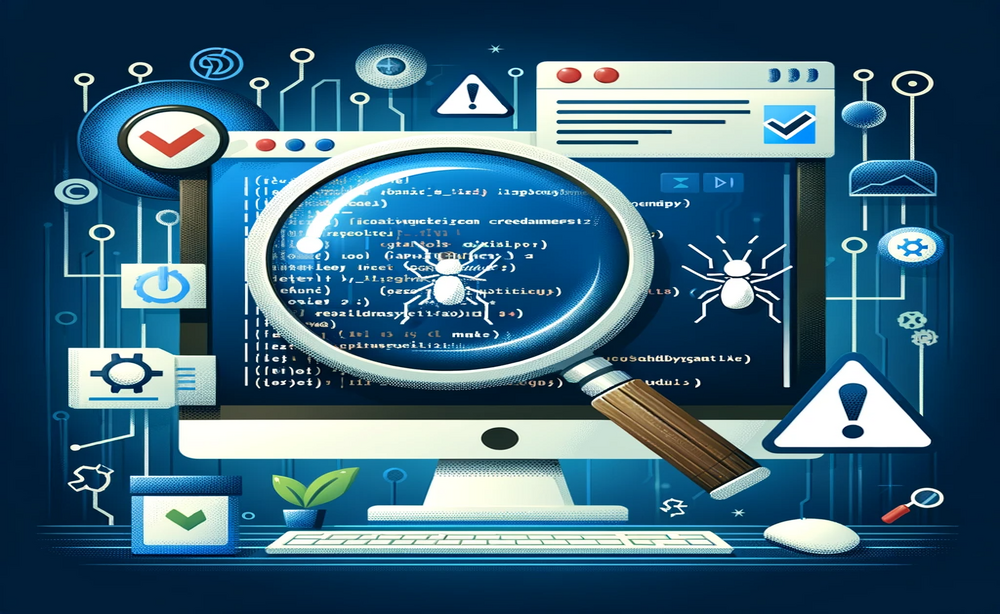
Source Code Analysis
Source Code Analysis service is a comprehensive process that scrutinizes the code of software applications to identify any vulnerabilities, bugs, or coding errors. It employs automated tools and expert review to systematically examine the code, ensuring adherence to coding standards and best practices. This service is crucial for detecting security flaws early in the development cycle, significantly reducing the risk of future breaches or failures. It also enhances code quality, ensuring efficiency, maintainability, and scalability. By providing detailed reports and recommendations, Source Code Analysis helps developers refine their code, resulting in more secure and reliable software products
What is Source Code Analysis?
- Security Vulnerability Detection: This service excels at identifying security vulnerabilities within the code, such as potential exploits or weak points, which are critical to prevent future cyber attacks and breaches.
- Code Quality Improvement: It focuses on enhancing the overall quality of the code by ensuring adherence to coding standards and best practices, which leads to improved efficiency, maintainability, and scalability of the software.
- Early Error Identification: One of the key benefits is the early detection of bugs, errors, or inconsistencies in the code, enabling developers to address issues during the development phase, thus saving time and resources in the long run
Key Features of Our Source Code Analysis Service
Developer-Driven Analysis Approach
Our team includes experienced developers who bring a practical understanding of coding challenges and best practices, ensuring that our analysis is deeply informed by real-world software development experience.
Comprehensive Security Vulnerability Scanning
We use advanced tools and methodologies to thoroughly scan source code for security vulnerabilities, crucial for protecting sensitive financial data and complying with industry regulations
Global Finance Sector Expertise
Our service is backed by a solid track record of working with global finance clients, providing us with unique insights into the specific requirements and challenges of the finance sector in terms of security and compliance.
Code Quality Enhancement
We focus on improving code quality by ensuring adherence to high coding standards, which leads to more efficient, maintainable, and scalable software, especially important in the fast-paced financial technology environment.
Customized Reporting and Recommendations
Our service includes detailed reporting and actionable recommendations, tailored to the specific needs of each project, enabling developers and project managers to make informed decisions and implement best practices in their software development lifecycle
Why Cerebro Cyber Security for Souce Code Analysis Service
- Expert Team with Real-World Development Experience: Cerebro Cyber Security boasts a team that includes seasoned developers, ensuring that the source code analysis is grounded in practical, real-world software development experience. This depth of understanding enables more effective identification of potential issues and practical recommendations for improvement.
- Tailored Solutions for Complex Requirements: Recognizing that each project has its unique challenges, Cerebro offers customized source code analysis services. This personalized approach is particularly effective in addressing the specific needs and complexities of your projects, ensuring that the analysis is not just thorough but also relevant to your specific context.
- Advanced Technology and Methodologies: Utilizing the latest technologies and methodologies, Cerebro ensures a comprehensive examination of source code for vulnerabilities, coding standards, and overall quality. This commitment to using cutting-edge tools and techniques means that your software will be vetted against the most current and rigorous standards, providing you with confidence in the security and robustness of your applications.
Securing Your Code, Empowering Your Future – Trust Cerebro for Unmatched Source Code Analysis!
At Cerebro Cyber Security, our Source Code Analysis Service is meticulously designed to ensure the highest standards of software integrity and security. Leveraging the expertise of our seasoned developers and the latest in analytical technology, we provide a comprehensive review that not only identifies vulnerabilities but also enhances the overall quality and efficiency of your code. Our tailored approach, combined with our deep understanding of complex project requirements, ensures that every aspect of your software is thoroughly examined and optimized for performance and security. We are committed to delivering analysis that not only meets but exceeds industry standards, safeguarding your software in today’s dynamic digital landscape.
Download Brochure
Get
Professional
Help
Contact Us
Request For Information And Demo
SIEM Log And Rule Correlation Service

SIEM Log And Rule Correlation Service
The SIEM Log and Rule Correlation, and Tuning Service is a comprehensive solution that specializes in real-time monitoring and analysis of log data across various network sources to provide immediate security insights. It employs advanced algorithms for correlating diverse log entries, effectively identifying patterns and anomalies that could signal potential security threats or operational problems. An integral part of the service is the development and refinement of custom rules, which are tailored to fit the specific needs and environment of the organization. This customization enhances the accuracy and relevance of generated alerts. Additionally, the service involves continuous tuning and optimization of these rules and the overall system, ensuring that the SIEM framework remains effective, efficient, and aligned with the evolving security landscape and organizational requirements
SIEM Log Tuning And Rule Correlation Service
- Advanced Log Analysis: This service involves the deep analysis of log data from various network sources, using advanced techniques to identify and interpret significant security events and patterns.
- Rule Correlation and Customization: A critical component is correlating logs against a set of predefined and custom rules, which are continually refined and adjusted to accurately detect and alert on specific security incidents and threats.
- Continuous Tuning for Accuracy and Efficiency: The service includes ongoing tuning of the SIEM system to reduce false positives and enhance detection accuracy, ensuring that the system stays up-to-date with the evolving cybersecurity landscape and organizational needs
Key Features of Our SIEM Log Tuning And Rule Correlation Service
Expert-Driven Rule Customization
Leveraging our extensive experience in incident response, we craft and fine-tune SIEM rules that are highly effective in identifying specific threats, ensuring that our rules are not just standard but tailored to meet the unique challenges and threat landscapes our clients face
Advanced Log Analysis and Correlation
We employ sophisticated log analysis techniques to sift through vast amounts of data, correlating events across different sources to accurately identify potential security incidents
Continuous System Tuning
Our service includes ongoing optimization of the SIEM system to improve accuracy and efficiency. We constantly update and adjust our systems to reduce false positives and adapt to the evolving cyber threat environment
Experienced Incident Response Team
Our team consists of seasoned cybersecurity professionals with a wealth of experience in incident response, ensuring quick and effective action in the face of security threats
Proactive Threat Intelligence Integration
We integrate the latest threat intelligence into our service, enabling us to anticipate and respond to emerging threats proactively, keeping our clients one step ahead of potential attackers
Why Cerebro Cyber Security for SIEM Log Tuning And Rule Correlation Service
- Experienced Team with Practical Expertise: Cerebro Cyber Security boasts a team of seasoned professionals who bring a wealth of real-world experience. This deep expertise, gained from handling a diverse range of actual cybersecurity incidents, ensures that the services are grounded in practical know-how and not just theoretical knowledge.
- Proven Track Record with Real-World Cases: The team at Cerebro has a proven track record of effectively managing and resolving real-world security incidents. This experience is invaluable for understanding complex threats and creating robust, battle-tested SIEM rules and configurations that can withstand the challenges of the ever-evolving cybersecurity landscape
- Utilization of Advanced Technology: Cerebro employs the latest and most advanced technology in their SIEM services. This technological edge enables them to efficiently process large volumes of log data, apply sophisticated correlation techniques, and provide state-of-the-art tuning and optimization, ensuring the highest level of security and efficiency for their client
Excellence in Cybersecurity – Stay One Step Ahead with Cerebro!
Cerebro Cyber Security’s SIEM Log Tuning and Rule Correlation Service is bolstered by our team’s extensive knowledge and practical experience gained from handling real-world cases. Our advanced technology enables us to provide precise and effective security solutions tailored to each client’s unique needs. This service empowers businesses to take a proactive stance against cyber threats, keeping them one step ahead in today’s constantly evolving cyber threat landscape
Download Brochure
Get
Professional
Help
Contact Us
Request For Information And Demo
Cyber Hygiene
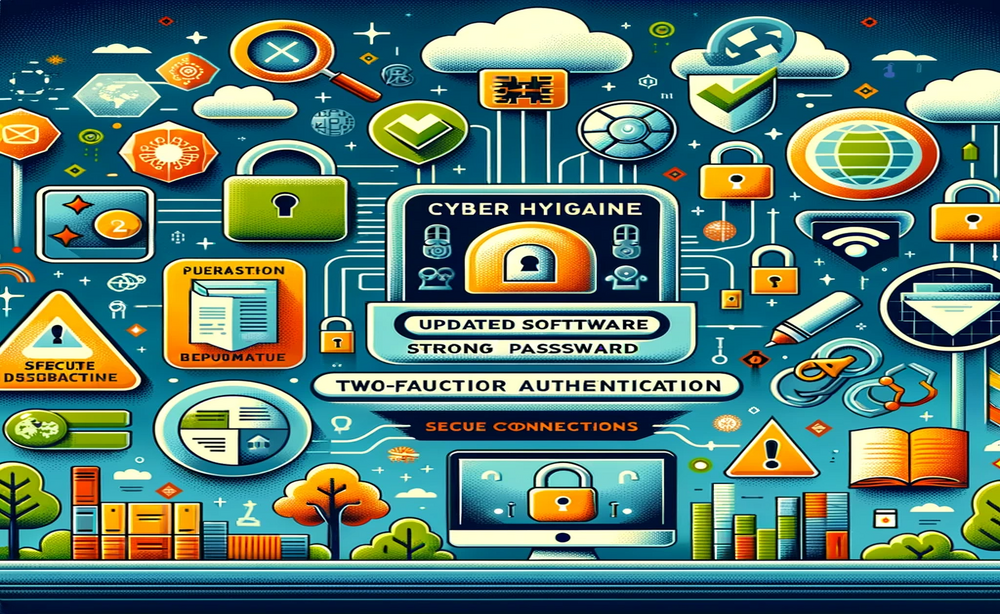
Cyber Hygiene
Cyber Hygiene, a crucial aspect of digital security, involves regular practices and steps that individuals and organizations must take to maintain and improve their online security and health. This service includes updating software regularly to protect against vulnerabilities, using strong and unique passwords for different accounts, and enabling two-factor authentication for an added layer of security. It also involves being vigilant against phishing attacks by verifying the authenticity of emails and links before interacting with them. Regular backups of important data ensure recovery in case of a cyber attack, while educating oneself and employees about the latest cyber threats helps in staying ahead of potential risks. Lastly, Cyber Hygiene includes using secure and encrypted connections, like VPNs, to safeguard data privacy and integrity during online activities
What is Cyber Hygiene?
- Regular Updates and Password Management: Keep all software updated to protect against vulnerabilities and use strong, unique passwords for different accounts, changing them regularly.
- Vigilance Against Threats: Be alert to potential cyber threats such as phishing attacks. Verify the authenticity of emails and links before interacting with them, and educate yourself about the latest cyber threats.
- Data Protection and Backup: Regularly backup important data to ensure recovery in case of a cyber attack. Use secure and encrypted connections, like VPNs, to protect data privacy and integrity during online activities
Key Features of Our Cyber Hygiene Service
Comprehensive Security Assessments
Regularly evaluates and audits your digital environment to identify vulnerabilities and recommend improvements, ensuring that your systems and data are always protected against the latest threats.
Continuous Software and System Updates
Manages and automates the update process for your software and systems, ensuring that they are always up to date with the latest security patches and features.
Password Management and Authentication Protocols
Offers tools and best practices for strong password management, including the implementation of two-factor or multi-factor authentication to add an extra layer of security.
Employee Training and Awareness Programs
Provides ongoing education and training for employees about the latest cybersecurity threats and best practices, helping to prevent human error and reinforce a culture of security awareness.
Backup and Recovery Services
Implements robust backup strategies and disaster recovery solutions to ensure that your data is regularly backed up and can be quickly restored in the event of data loss or a cyber attack
Why Cerebro Cyber Security for Cyber Hygiene
- Advanced Technology and Expertise: Cerebro Cyber Security employs cutting-edge technology and has a team of experts specialized in the field of cyber security. This combination ensures that they are well-equipped to handle the latest cyber threats and provide top-notch security solutions
- Customized Security Solutions: Understanding that each organization has unique security needs, Cerebro offers tailored cyber hygiene services. They assess individual risks and requirements to provide customized solutions that best fit the specific needs of your organization
- Proactive Threat Management and Support: Cerebro emphasizes proactive measures in managing cyber threats, constantly monitoring for potential risks and swiftly responding to them. Their dedicated support team ensures that any issues are addressed promptly, minimizing the impact on your operations.
Your Cyber Safety, Our Priority – Step into a Secure Digital Future with Cerebro
Our Cyber Hygiene service is designed to continuously protect and enhance your digital security. Offering proactive protection against current threats, customized security solutions, and comprehensive training programs, we aim to keep your presence in cyberspace secure. At every step, we are here to ensure your safety and support your confident progress in the digital world.
Download Brochure
Get
Professional
Help
Contact Us
Request For Information And Demo
MDR

Managed Detection And Response Service
Managed Detection and Response (MDR) services combine technology and human expertise to provide continuous monitoring and proactive threat hunting for businesses. Unlike traditional security measures, MDR focuses on rapid detection and response to cyber threats, ensuring real-time protection. It includes 24/7 network monitoring, using advanced analytics and threat intelligence to identify potential risks. MDR teams actively search for vulnerabilities within networks, going beyond standard security measures to uncover hidden threats. In case of a cyber incident, MDR provides rapid response and recovery guidance, while also helping organizations improve their overall cybersecurity strategies
Endpoint Security Monitoring Service
After taking the necessary security measures, there is a growing awareness among companies to focus on the areas where employees operate. If you cannot see what is happening in your corporate network, “You cannot manage the points you cannot see,” and you may only realize the dangers when it’s too late.
There is software available that allows you to define the behaviors a threat actor could exhibit on your end-user networks and servers and turn these definitions into alarms: XDR/EDR PLATFORM
If you answer yes to at least one of the following questions, you need Carbon Black Response!
- Do you have a SOC team?
- Do you conduct Incident Response (IR) activities in-house?
- Are you looking for a tool for your SOC team or IR activities in the Cloud or your Data Center?
- Do you struggle to find the root cause of security breaches?
- Would you like to isolate and examine end-user devices remotely or from the relevant network in case of a security breach?
Unlimited Scale
An organization may have hundreds of thousands of endpoints under surveillance, but a threat actor only needs to compromise one of these endpoints to infiltrate the system. Unfortunately, today’s security solutions cannot completely prevent advanced attacks. You need a solution that can scale across your entire organization to detect the attacker and see what they are doing on your corporate network.
- XDR / EDR Platform provides a continuous and centralized logging system, allowing you to conduct retrospective research.
- Benefit from the capabilities of XDR / EDR Platform and other intelligence services.
- Ensure security for your users with minimal impact and low resource usage on end-users.
Unfiltered Visibility
Investigations that typically take 78 hours can be completed in as little as 15 minutes. XDR / EDR Platform gathers comprehensive information about events on end-user devices, providing a clear picture of responses to events and changes on the device (such as registry changes, executed commands, downloaded files, etc.).
- Even offline, it provides full access to comprehensive records for each end-user device.
- Visualize the easily tracked attack chain with attack chain visualizations at every stage of the attack.
- Uncover the root cause to quickly address gaps in your defense.
Be Proactive
The average discovery time for a security breach is around 150 days. We even have experience with attackers waiting 1-2 years before taking action. When log and alarm mechanisms are not properly configured and there is not enough experienced personnel, it becomes difficult to notice when an attacker is inside, and finding out what happened can be as challenging as finding a needle in a haystack. With XDR/EDR Plarform, you can investigate an incident after a cybersecurity event and proactively make the attacker’s job more difficult by designing indicators of compromise (IoC) learned earlier.
- Detect threats with proactive and iterative searches for attacks, create timelines, and visualize them.
- Use threat intelligence for automatic detection of suspicious behaviors in your environment (such as YARA, NIST, STIX/TAXII, iSIGHT, etc.).
- Associate network, endpoint, and SIEM (native integration with QRadar, Splunk, other SIEM solutions using an event forwarder) data through open APIs and ready-to-use package integrations.
Real-Time Response
An attacker can compromise your environment in an hour or less. XDR/EDR Platform provides you with the power to respond and resolve in real-time, stop active attacks, and quickly repair the damage.
- Isolate infected systems to prevent lateral movement and remove malicious files.
- Provide secure access to any endpoint with “Live Response.”
- Automatically collect and store detailed forensic data for post-incident investigations.’
Download Brochure
Get
Professional
Help
Contact Us
Request For Information And Demo
SOC

SOC Service:
Continuous Monitoring And Response For Your Security
Continuous Monitoring and Response services provide around-the-clock surveillance of your network, swiftly identifying and responding to any cybersecurity threats. This proactive approach ensures immediate action against potential risks, maintaining the integrity and safety of your digital environment
What is SOC?
- SOC is a team that continuously monitors, detects, analyzes, and responds to the cybersecurity of your business.
- SOC provides a proactive defense against advanced threats, identifies and responds to security events promptly.
Service Scope
Our SOC Service includes the following elements:
Threat Monitoring and Detection
- Monitor threats across a wide range, from endpoints to network infrastructure.
- Identify unknown threats with behavior analysis and anomaly detection.
Incident Response
- Effectively handle threats quickly and efficiently.
- Determine the root cause of incidents and prevent similar occurrences.
Security Breach Investigation
- Thoroughly investigate security breaches.
- Develop strategies to combat advanced threats.
Reporting and Analysis
- Receive regular reports on your security status.
- Update your security measures continuously with analyses.
Why Us?
Don’t jeopardize your business’s security. Stay one step ahead of potential threats with SOC Service. Contact us to learn how we can strengthen your security.
Download Brochure
Get
Professional
Help
Contact Us
Request For Information And Demo
Incident Response

Incident Response
Incident Response teams, often comprised of elite cybersecurity experts, specialize in quickly addressing and mitigating security breaches and cyber attacks. These teams utilize advanced skills and tools to analyze, contain, and eradicate threats, minimizing damage and preventing future incidents. Their rapid and strategic response is crucial for safeguarding an organization’s digital assets and maintaining operational continuity in the face of cyber threats
What is Incident Response?
- Identification and Analysis: Incident Response begins with the detection and identification of a cybersecurity incident, followed by a thorough analysis to understand the nature, scope, and impact of the threat.
- Containment and Eradication: Once an incident is identified, immediate steps are taken to contain it, preventing further spread or damage. This phase also involves eradicating the threat from the system to eliminate any risks of recurrence.
- Recovery and Post-Incident Review: After neutralizing the threat, the focus shifts to recovery, restoring systems and operations to normal. A post-incident review is conducted to analyze the response effectiveness and to identify lessons learned and areas for improvement in security protocols.
Key Features of Our Incident Response Service
Rapid Incident Identification
- Utilize advanced threat detection tools for early incident identification.
- Implement 24/7 monitoring of network and system activities for prompt anomaly detection.
Coordinated Incident Containment
- Quickly isolate affected systems to prevent the spread of threats.
- Minimize operational impact on your organization.
Expert Forensic Analysis
- Conduct in-depth forensic analysis to understand the nature and origin of the incident.
- Preserve digital evidence for legal and investigative purposes.
Proactive Recovery Strategies
- Develop and execute recovery plans to restore normal operations.
- Provide guidance on fortifying systems to prevent future incidents.
Post-Incident Evaluation
- Conduct a thorough analysis of the incident response process.
- Implement improvements based on lessons learned.
Why Cerebro Cyber Security for Incident Response?
- Elite Team of Experts: Cerebro Cyber Security boasts an elite team of cybersecurity professionals, each with specialized expertise in handling complex cyber threats. This ensures a highly skilled and coordinated response to any incident.
- Advanced Threat Intelligence: Their approach integrates cutting-edge threat intelligence, allowing for rapid identification and understanding of sophisticated cyber attacks, thus ensuring a prompt and effective response.
- Customized Response Strategies: Cerebro Cyber Security tailors its incident response strategies to each organization’s unique needs, ensuring a more effective and efficient handling of incidents, minimizing impact and downtime
Secure Tomorrow, Today: Your Guardian in the Cyber Battleground
In the ever-evolving landscape of cyber threats, the importance of a robust Incident Response (IR) strategy cannot be overstated. With the increasing sophistication of cyber attacks, having a dedicated and skilled team ready to respond is not just a precaution, it’s a business necessity. An effective Incident Response plan not only mitigates the immediate damages of an attack but also fortifies an organization’s defenses against future threats. It’s a critical component in maintaining trust, operational integrity, and the long-term success of any modern organization. In this digital age, being prepared with a proactive Incident Response strategy is the best defense against the unpredictable nature of cyber threats.
Download Brochure
Get
Professional
Help
Contact Us
Request For Information And Demo
Cybersecurity Hardening

Strengthening Your Digital Fortress
Security Hardening
Security Hardening refers to the process of strengthening the security of a system by reducing its vulnerabilities and potential attack surfaces. This involves updating software and systems to the latest versions, implementing strict access controls, and removing unnecessary services or features that could be exploited. Hardening practices also include encrypting sensitive data and communications, as well as regularly auditing and testing the system for weaknesses. By applying these measures, an organization can significantly enhance its resilience against cyber attacks and breaches. Security Hardening is a continuous process, requiring ongoing vigilance to adapt to new threats and technologies
What is Cybersecurity Hardening?
Cybersecurity Hardening is the process of fortifying computer systems, networks, and applications by reducing vulnerabilities and enhancing security measures. It involves implementing robust security policies, updating and patching software, and configuring systems to minimize potential attack surfaces. This proactive approach aims to protect against cyber threats, ensuring the integrity and confidentiality of data in an increasingly digital worl
Service Highlights
Vulnerability Assessment and Patch Management
Regularly identifying and patching vulnerabilities in software and hardware to prevent exploitation.
Configuration Management
- Optimizing security settings and configurations of systems and applications to harden them against attacks
Access Control Enhancement
- Strengthening user authentication and authorization processes to ensure only authorized access to sensitive data and systems
Network Security Improvements
- Enhancing network defenses through firewalls, intrusion detection systems, and encryption to protect data in transit
Regular Security Audits and Compliance
- Conducting thorough security audits to assess the effectiveness of hardening measures and ensure compliance with relevant cybersecurity standards.
Why Cerebro Cyber Security for Hardening Service?
- Expertise in Advanced Security Practices: Cerebro Cyber Security brings a high level of expertise in advanced security hardening techniques, ensuring that systems are fortified using the latest and most effective methods against cyber threats.
- Customized Security Solutions: They specialize in providing tailored hardening solutions that align with each organization’s unique infrastructure and security needs, offering a more personalized and effective security approach
- Ongoing Support and Monitoring: Cerebro Cyber Security not only implements hardening measures but also provides ongoing support and monitoring, ensuring that security systems remain robust and adaptive to evolving cyber threats
Get Started
Security Hardening is a comprehensive approach to strengthen an organization’s cyber defenses, encompassing thorough vulnerability management, optimal system configurations, strict access controls, robust network security, and continuous compliance evaluations.
Download Brochure
Get
Professional
Help
Contact Us

